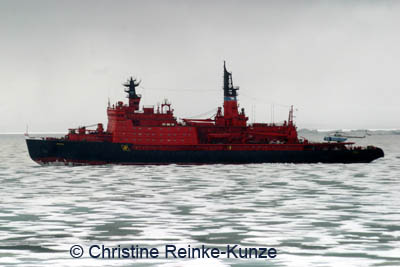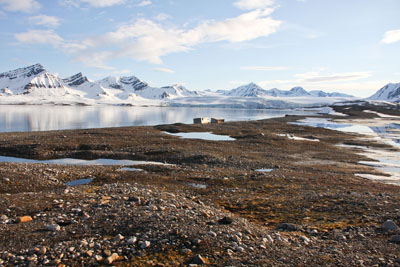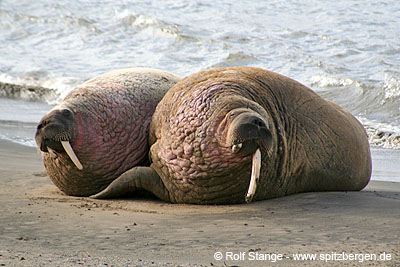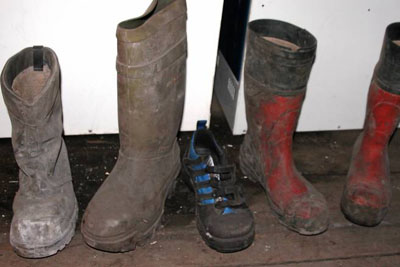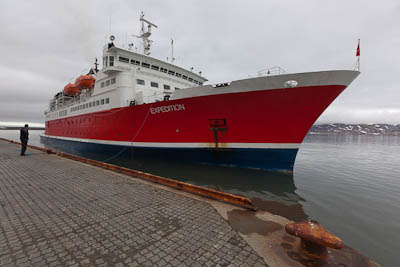-
current
recommendations- Liefdefjord
New page dedicated to one of Spitsbergen's most beautiful fjords. Background information and many photos.
- New Spitsbergen guidebook
The new edition of my Spitsbergen guidebook is out and available now!
- Liefdefjord
New page dedicated to one of Spitsbergen's most beautiful fjords. Background information and many photos.
Page Structure
-
Spitsbergen-News
- Select Month
- June 2025
- May 2025
- April 2025
- March 2025
- February 2025
- January 2025
- December 2024
- November 2024
- October 2024
- September 2024
- August 2024
- July 2024
- June 2024
- May 2024
- April 2024
- March 2024
- February 2024
- January 2024
- December 2023
- November 2023
- October 2023
- September 2023
- August 2023
- July 2023
- June 2023
- May 2023
- April 2023
- March 2023
- February 2023
- January 2023
- December 2022
- November 2022
- October 2022
- September 2022
- August 2022
- July 2022
- June 2022
- May 2022
- April 2022
- March 2022
- February 2022
- January 2022
- December 2021
- November 2021
- October 2021
- September 2021
- August 2021
- July 2021
- June 2021
- May 2021
- April 2021
- March 2021
- February 2021
- January 2021
- December 2020
- November 2020
- October 2020
- September 2020
- August 2020
- July 2020
- June 2020
- May 2020
- April 2020
- March 2020
- February 2020
- January 2020
- December 2019
- November 2019
- October 2019
- September 2019
- August 2019
- July 2019
- June 2019
- May 2019
- April 2019
- March 2019
- February 2019
- January 2019
- December 2018
- November 2018
- October 2018
- September 2018
- August 2018
- July 2018
- June 2018
- May 2018
- April 2018
- March 2018
- February 2018
- January 2018
- December 2017
- November 2017
- October 2017
- September 2017
- August 2017
- July 2017
- June 2017
- May 2017
- April 2017
- March 2017
- February 2017
- January 2017
- December 2016
- November 2016
- October 2016
- September 2016
- August 2016
- July 2016
- June 2016
- May 2016
- April 2016
- March 2016
- February 2016
- January 2016
- December 2015
- November 2015
- October 2015
- September 2015
- August 2015
- July 2015
- June 2015
- May 2015
- April 2015
- March 2015
- February 2015
- January 2015
- December 2014
- November 2014
- October 2014
- September 2014
- August 2014
- July 2014
- June 2014
- May 2014
- April 2014
- March 2014
- February 2014
- January 2014
- December 2013
- November 2013
- October 2013
- September 2013
- August 2013
- July 2013
- June 2013
- May 2013
- April 2013
- March 2013
- February 2013
- January 2013
- December 2012
- November 2012
- October 2012
- September 2012
- August 2012
- July 2012
- June 2012
- May 2012
- April 2012
- March 2012
- February 2012
- January 2012
- December 2011
- November 2011
- October 2011
- September 2011
- August 2011
- May 2011
- April 2011
- March 2011
- February 2011
- January 2011
- December 2010
- November 2010
- September 2010
- August 2010
- July 2010
- June 2010
- May 2010
- April 2010
- March 2010
- February 2010
- November 2009
- October 2009
- August 2009
- July 2009
- June 2009
- May 2009
- April 2009
- March 2009
- February 2009
- January 2009
- December 2008
- November 2008
- October 2008
- August 2008
- July 2008
- June 2008
- May 2008
- April 2008
- March 2008
- February 2008
- April 2000
- Select Month
-
weather information
-
Newsletter

| Guidebook: Spitsbergen-Svalbard |
Home
→ August, 2012
Monthly Archives: August 2012 − News & Stories
Russian nuclear waste in polar seas
The Sovjet Union has „deposited“ vast amounts of radioactive substances on the sea bottom in the Russian sector of the Barents Sea and the Kara Sea (east of Novaya Zemlya), including nuclear waste, reactors from submarines and ships and vessels with nuclear components or cargo that sank or were sunk. This is generally no news. Now, Russian authorities have made an inventory list of nuclear substances on sea bottoms adjacent to Norwegian waters available to Norwegian authorities. The quantities have surprised even insiders. On the list are not, as believed so far, 11,000 containers with nuclear waste, but at least 17,000 (yes, seventhousand), additionally 19 ships with nuclear cargo, 5 reactor sections, 3 nuclear submarines, nuclear fuel from the icebreaker Lenin and „735 other radioactive units“, whatever this means. And of course nobody knows if this list is comprehensive.
Now, Russian and Norwegian authorities make joint efforts to map the exact positions and conditions of the nuclear graveyards.
So far, investigations have proven the waters and biota of the Barents Sea to have very low levels of radioactivity. This may change, when reactors or containers are damaged in the future. In single cases, even the development of chain reactions up to nuclear explosions is believed to be possible by environmentalists. Officials have not confirmed this.
Large efforts have already been made, also with financial and practical support from the EU and Norway, to retreave radioactive wrecks, reactors and waste from the coasts of the Kola Peninsula. The efforts are obviously to be increased and continued to avoid major disasters for environment and people. The long-term disposal of radioactive is a question with very serious implications for environment and societies and so far an unanswered question.
The Russian nuclear icebreaker Yamal, 2004 in Franz Josef Land. Foto © Christine Reinke-Kunze.
Source: Aftenposten, 28 August 2012
Accident in front oft Esmarkbreen
On thirsday the 21th of august one person was killed in front of Esmarkbree (Esmark Glacier) during a Zodiac cruise. A piece of ice broke down from the nearly 25 m high egde oft the glacial front. The exact circumstances oft the accident will be investigated during the next weeks.
Esmarkbreen ist situated inside of Ymerbukta (Ymer Bay)on the northern side of Isfjord (Ice Fjord).
Ymerbukta with Esmarkbreen
Source: Svalbardposten 33/2012
Russian commercial helicopter traffic and the Spitsbergen treaty
The subject of Russian helicopter traffic is again surfacing as a matter of controversy between Russians and Norwegian authorities. Within their intentions of increasing tourist activities in Barentsburg and Pyramiden, where the hotel is soon to be opened again, the Russians want to offer helicopter transport from Longyearbyen to their settlements on a commercial basis (flightseeing is generally not allowed in Spitsbergen).
They refer to the non-discrimination principle of the Spitsbergen-Treaty (often called Svalbard Treaty, but the original text does not know the term Svalbard), which gives all signatory countries and their citizens equal rights. Norwegian authorities point out that Norwegian aviation laws to only allow Norwegian companies to offer commercial aviation services within Norway. In the end, it boils down to the question if Norwegian national law is to be rated higher than the international treaty which was signed in 1920 and came into power in 1925, which gives Norway »the full and absolute sovereignty of Norway over the Archipelago of Spitsbergen…«, no less, no more. Later in the same year a national Norwegian law declared that »Svalbard is part of the Kingdom of Norway«.
Controversial: Russian helicopter traffic
Walrus population on the growth
Norwegian Polar Institute scientists have installed automatic cameras at 5 walrus colonies (Lågøya, Storøya, Kapp Lee, Andréetangen, Havmerra/Tusenøyane). Preliminary results indicate an overall population growth in recent years. A count from 2006 had resulted in roughly 3,000 walrusses in Spitsbergen’s waters.
Another interesting preliminary result is the remarkably low sensitivity to disturbance by polar bears or tourists. Inspite of numerous visits, no evidence has been found for walrusses being disturbed by tourists.
Walrusses on Edgeøya
Camping site now under Dutch control
The camping site near Longyearbyen is now, after several ownership changes through recent years, finally under Dutch control. Exclusive owner is now Michelle van Dijk, who owned the site together with Andreas Umbreit from Germany in the past. She has already started work to make the camping site nicer and more user-friendly.
The camping site near Longyearbyen
Anja Fleig (1974-2012)
Many are around in the business of polar expedition cruising, some stay for a while but a very few keep it going for more than just a few years. Anja Fleig was amongst the most highly respected expedition leaders we have known in recent years.
On July 14, 2012, Anja passed away far too early in her young life after a disease she had fought for a long time.
Together with many friends and colleagues, the author of these lines, who has known her since the came to Longyearbyen in the late 1990s, will miss her as the good person, the good friend, the good guide and expedition leader she was.
Few, if any, had better knowledge, more experience and higher standards as expedition leader than Anja. Having lived her adventurous, exciting life for more than just a few seasons, she had had ample opportunities to make experiences that are once-in-a-lifetime or simply out of reach for most others. A little comfort may be found in the idea that Anja saw much more of the natural beauty of this world than others who have the chance to stay around twice as long.
Anja got married to her husband Tim in 2009 in Spitsbergen on their floating second home, the Polar Star. Together, they have a child born in 2010.
Anja in the happier days 2007 on Bear Island
The boot mystery
This summer’s Spitsbergen mystery is the disappearing of 40 boots from a changing room in the mining settlement Sveagruva. No less than 40 boots have vanished. The point is, however, that only the right boots are gone and the left ones are still standing there. Now everybody is guessing what might have happened: an invasion of one-footed aliens? Trolls? Right-wing extremists who hate everything on the left side? …?
Locally, it is taken with a sense of humour, but everybody is curious about the story behind it. And there is a bunch of 40 guys who would quite like to have their boots back.
40 lonesome boots in Sveagruva. Foto © Jan Ove Steinsmo, Store Norske.
Source: Aftenposten
Grounding of MS Expedition
The small cruise ship MS Expedition (100 passengers, 57 crew) touched ground near Isispynten, east of Nordaustland, on 23rd July. The hull suffered minor damage and took a small volume of water. According to the ship owner and Norwegian officials, neither people nor the environment were at any time endangered. The ship could later get free and return to Longyearbyen with its own engine power.
This was already the third event of this kind in Spitsbergen this summer. On 23rd June, the „National Geographic Explorer“ ran aground in Engelskbukta, south of Kongsfjord. On 10 July, the day trip boat „Polar Girl“ managed to hit the bottom near Grumantbyen.
All groundings took place while the ships were on sightseeing cruise near the shore at low speed and finally went over without any serious drama. Nevertheless, these events are mostly unacceptable in areas without comprehensive SAR and oil spill facilities. (There are exceptions: small, strong boats can usually tolerate “controlled” groundings without any difficulty, this is occasionally even done deliberately. It is more or less a daily routine for example for flatbottom sailing ships in certain areas of the Dutch coast. But certainly not by any ship remotely similar to the MS Expedition in arctic waters).
A major problem for the safety of navigation in Spitsbergen is the lack of good charts. The Norwegian mapping authorities have this year given priority to other areas in mainland Norway rather than Spitsbergen. Given current working pace, it will take several generations to map the waters around the whole archipelago properly. Inspite of the official political priority that the northern areas are supposed to enjoy („nordområdesatsing“), Norwegian authorities seem not to take nautical safety in Svalbard waters important enough to allocate resources for proper mapping.
MS Expedition in Ny Ålesund, July 2011.
Source: Svalbardposten 29/2012
News-Listing live generated at 2025/June/15 at 07:05:46 Uhr (GMT+1)
